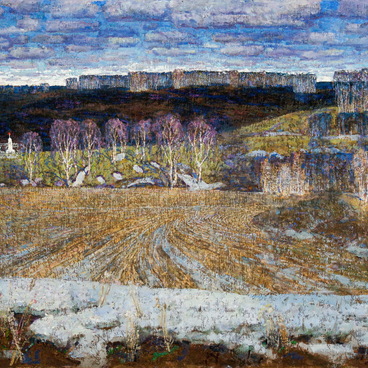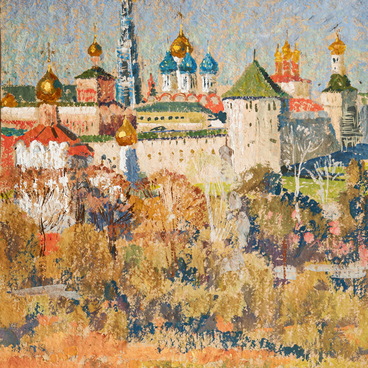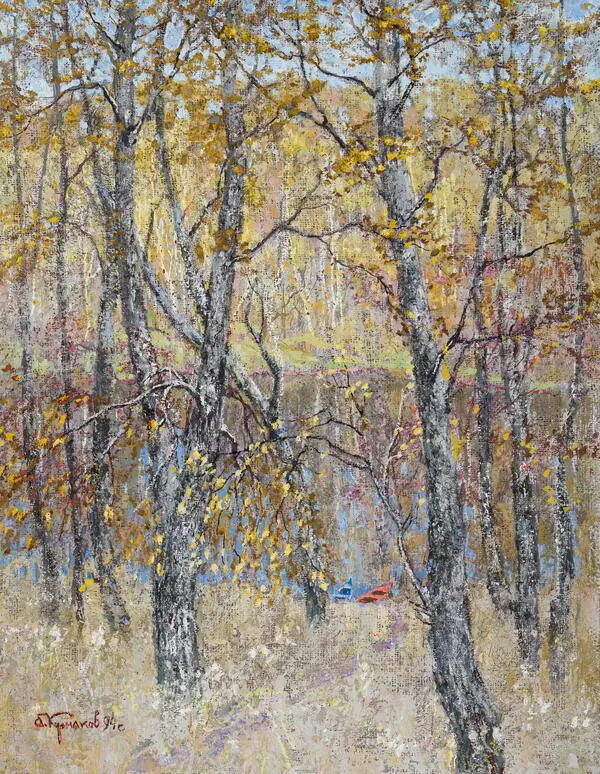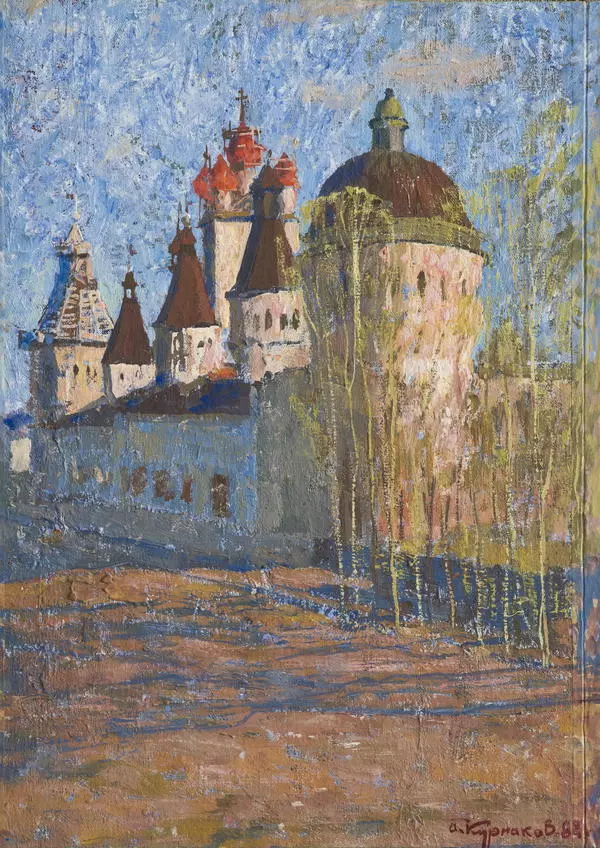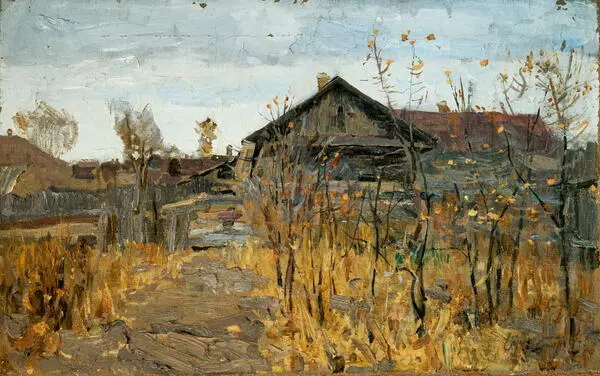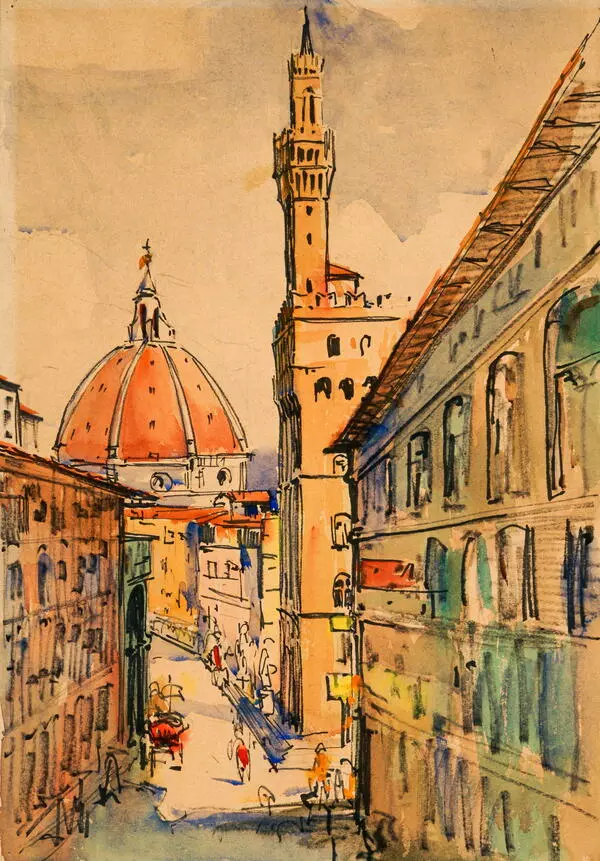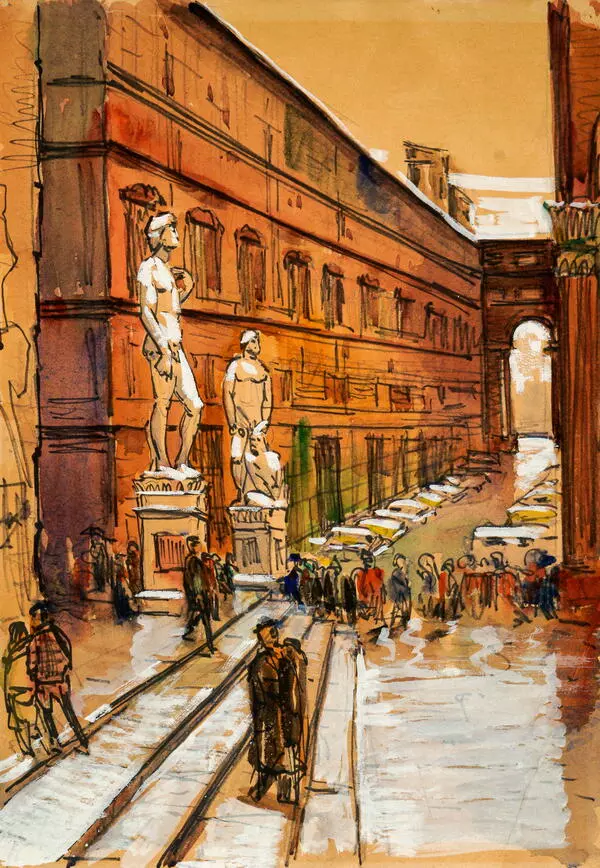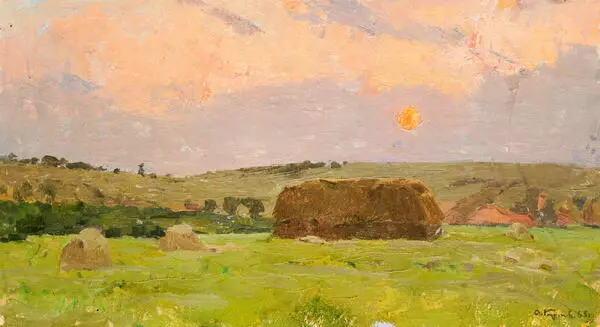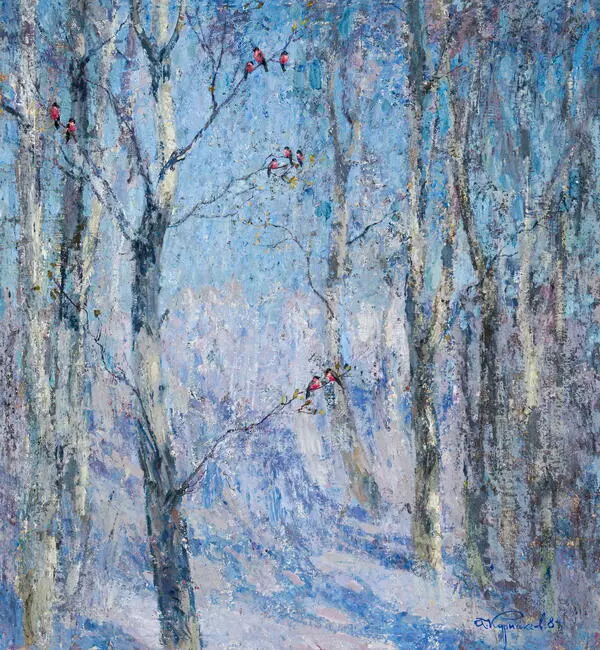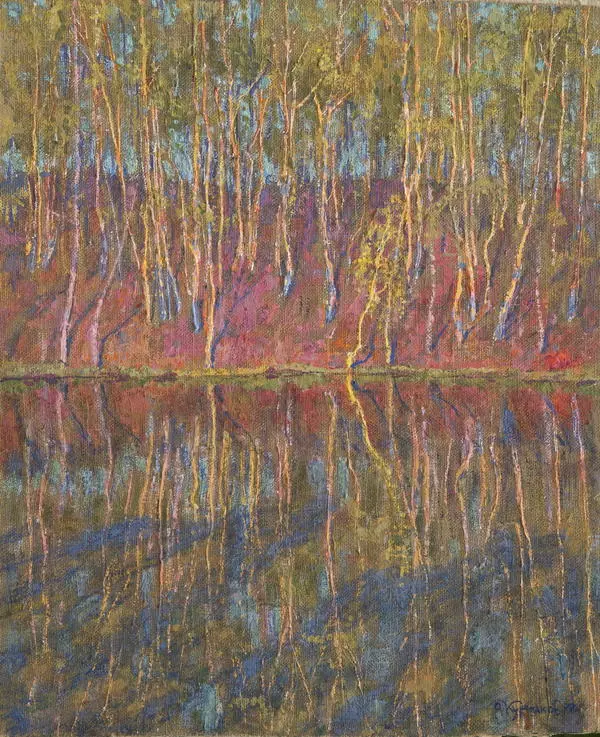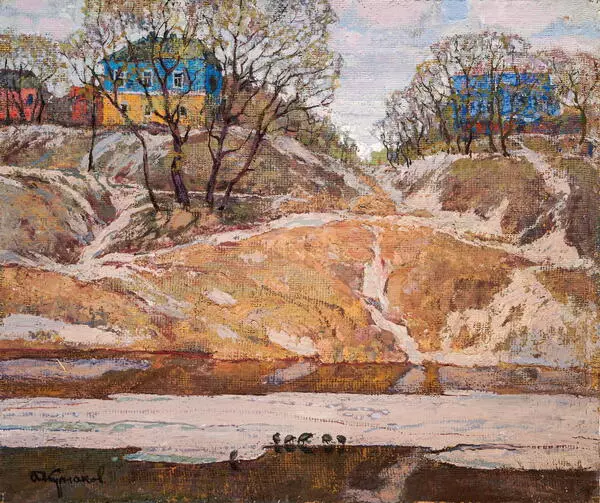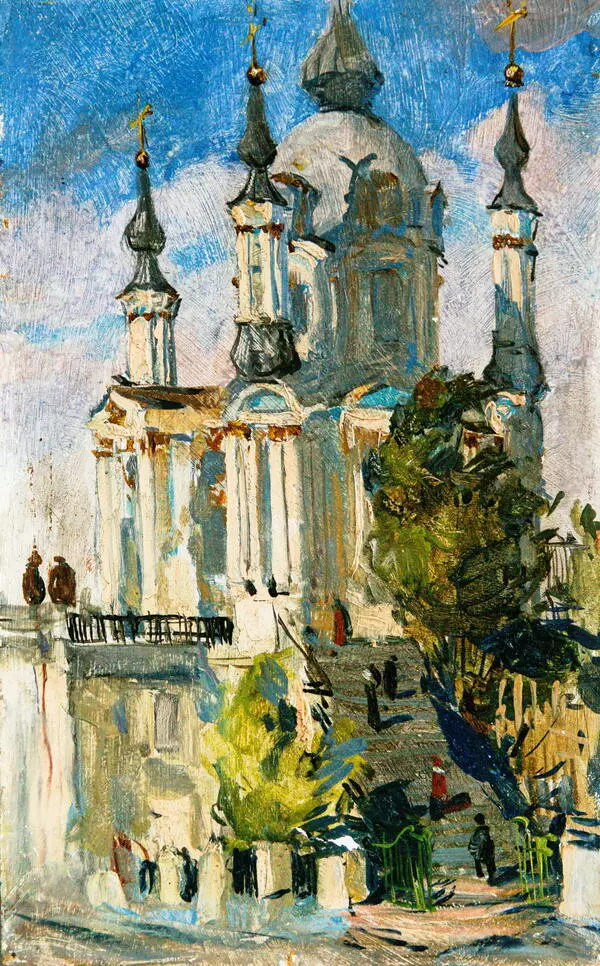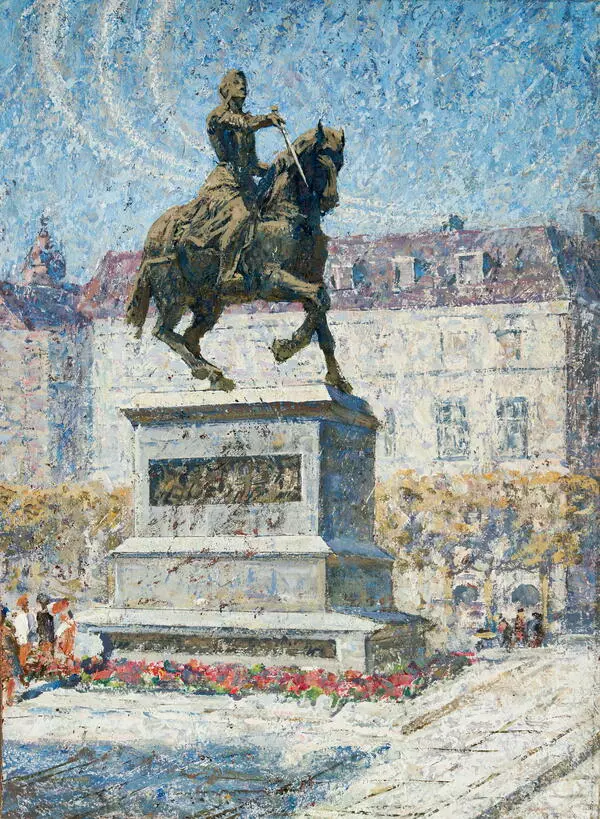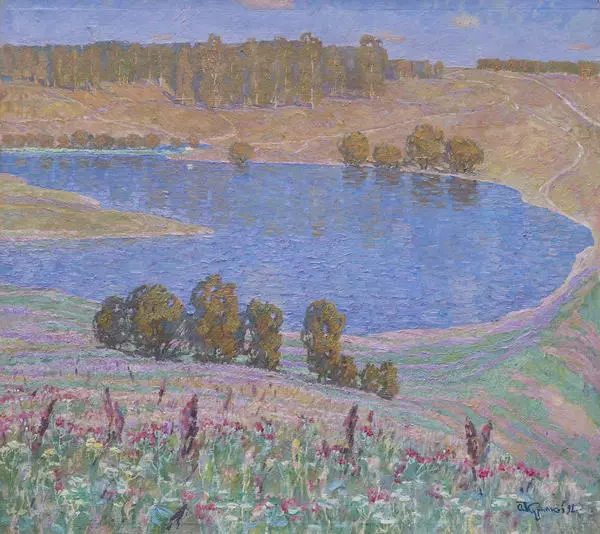The painting “Haystack”, which is part of the series “In the Homeland of Nikolay Leskov”, depicts a winter landscape — calm, cold and sunny at the same time. The Russian writer, publicist, and literary critic Nikolay Leskov came from the same region as the artist Andrey Kurnakov. Leskov was born in 1831 in the village of Gorokhovo, Oryol Governorate. He began his career as a government employee, and around the age of 30, he turned to a literary career. At first, Leskov wrote articles for magazines, but later on, he switched to literary works like novels, tales, short stories, and plays. His most famous work is “The Tale of Cross-eyed Lefty from Tula and the Steel Flea”. Even though Leskov eventually settled in Saint Petersburg after a lot of traveling and moving around, his true home was still in the Oryol region, which Andrey Kurnakov depicted so many times in his works.
The painting called “Haystack” depicts that period at the end of winter when there is still snow all around, but spring is already in the air with all its sunlight, calmness, and freshness. The foreground shows a part of the field that used to have a road in the middle. The softened crust, warmed up by the sun, reveals tufts of withered grass from last year. The snow melts under the warm rays, illuminating the whole picture, so there are a lot of thawed patches seen in the distance. The first greenery shyly shows through them. The artist uses his favorite technique and fills the foreground with shadows that merge with the sky blue and soft pink hayfield.
The picture portrays a usual workday in a quiet rural area. The artist focuses on two brownish-green haystacks: one of them is huge, while the other is much smaller and looks slightly uneven, which emphasizes the realistic manner of the landscape. The haystacks are supported by logs, which cast long shadows on them. Birds are seen circling over the stacks. Their black silhouettes are visible against the sky. Openwork tree crowns behind the haystacks and a small forest stretching toward the horizon are painted in various shades of blue, which brings airiness into the landscape. The trees do not contrast with the sky, but rather gradually merge with it, adding blue nuances.
Kurnakov used his favorite colors — Prussian blue, cobalt blue, and ultramarine — to make light and air the main characters of the painting. The artist managed to convey the state of nature. His lyrical landscape enthralls with its freshness, emotional intensity, and verisimilitude.
The painting called “Haystack” depicts that period at the end of winter when there is still snow all around, but spring is already in the air with all its sunlight, calmness, and freshness. The foreground shows a part of the field that used to have a road in the middle. The softened crust, warmed up by the sun, reveals tufts of withered grass from last year. The snow melts under the warm rays, illuminating the whole picture, so there are a lot of thawed patches seen in the distance. The first greenery shyly shows through them. The artist uses his favorite technique and fills the foreground with shadows that merge with the sky blue and soft pink hayfield.
The picture portrays a usual workday in a quiet rural area. The artist focuses on two brownish-green haystacks: one of them is huge, while the other is much smaller and looks slightly uneven, which emphasizes the realistic manner of the landscape. The haystacks are supported by logs, which cast long shadows on them. Birds are seen circling over the stacks. Their black silhouettes are visible against the sky. Openwork tree crowns behind the haystacks and a small forest stretching toward the horizon are painted in various shades of blue, which brings airiness into the landscape. The trees do not contrast with the sky, but rather gradually merge with it, adding blue nuances.
Kurnakov used his favorite colors — Prussian blue, cobalt blue, and ultramarine — to make light and air the main characters of the painting. The artist managed to convey the state of nature. His lyrical landscape enthralls with its freshness, emotional intensity, and verisimilitude.

